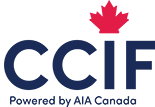Vehicle telematics systems are nothing new in the automotive industry. They consist of an onboard device which communicates from the vehicle to a third party such as a dispatch service. The original idea was created prior to everyone having supercomputers in their pockets.
Those fancy phones in our pocket have lots of overlooked sensors packed into a very small device. Some of the sensors can gather data such as acceleration, deceleration, g-force, and location. This data is used to generate Crash Detection software which leverages these sensors.
This idea takes the integrated onboard solution and transforms it to a truly portable solution linked to the person not the vehicle. After all, car accidents happen, but rather than worry about who you are going to call when it happens to you, Crash detection software takes care of it.
Smartphone manufacturers have also embedded this technology into their devices. The smartphone can measure changes in speed, direction, cabin pressure and sound to determine a crash event. If a crash is detected, a notification will prompt the user to allow emergency services to be contacted and provide the GPS location. One device manufacturer utilizes satellites to text message emergency services if cell service is not available. Considering the popularity of these devices we should expect this technology to grow and expand.
Some insurance companies have deployed a crash detection feature into their apps. A customer would have to opt into the program and give the app access to the required sensors and data. If a crash is detected a notification will confirm the accident, prompt if 911 needs to be dialed, and lastly give the customer an option to start the claim filing. This, in turn, will speed up the claim process and shorten the claim cycle time.
A software development company offers a suite of products that can detect car crashes and send help in near real time. The software can detect crash severity and point of impact based on year, make, and model. An insurance company that adopts this software may use this information to better match the adjuster to the accident. An insurance company will easily be able to reconstruct the accident using data points like time, weather, precrash driving behavior, evasive maneuvers, speed, number of impacts, and other information. This data will be more accurate than eyewitness interviews.
Ultimately, this technology is made to ensure driver safety. One major issue we all face in the event of an accident is the time it takes for emergency personnel to arrive on the scene. This time can vary depending on the location, but the longer response times tend to lead to more fatalities. All the advancements in technology strive to make our roads safer.
Interested in knowing how to keep up with emerging technologies in the industry? Consider continuous collision training with I-CAR Canada. I-CAR Canada provides a comprehensive range of standardized continuous training programs, such as ADAS calibration, for collision repair professionals across Canada, allowing technicians to have the skills and knowledge necessary to seamlessly repair modern vehicles.
About I-CAR Canada
I-CAR is an international organization dedicated to providing the information required to perform complete, safe, and quality auto repairs.
I-CAR Canada is a training and recognition program run by the Automotive Industries Association of Canada (AIA Canada), a not-for-profit organization representing, supporting and leading innovation in Canada’s $37.8 billion auto care sector.
Aimed at up-skilling tradespeople in the collision industry, I-CAR training has been available in Canada since 1979 and has been operated by AIA Canada since 2010.
